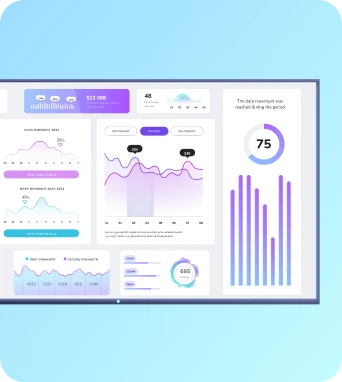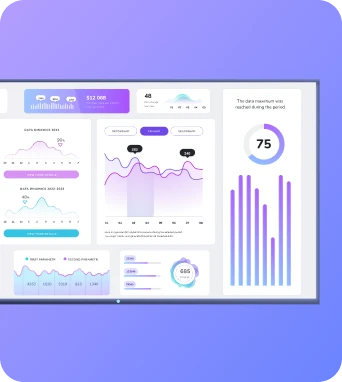Introduction: Why Employee Engagement Matters More Than Ever
Imagine walking into an office where everyone’s buzzing with energy, creativity flowing like coffee at a Monday morning meeting. Sounds dreamy, right? But here's the cold hard truth—only 33% of employees feel engaged at work, according to Gallup's latest report. In a world where talent is the new gold, boosting employee engagement is no longer optional; it's essential.
As we head into 2024, companies are reevaluating how they connect with their most valuable asset—their people. With hybrid work models, shifting expectations around mental health support, and a demand for transparency, now's the time to rethink your strategy. So grab your notepad (or your digital device) because we’re diving into 10 transformative strategies to elevate engagement this year.
Strategy 1: Create an Engaging Onboarding Experience
A great onboarding experience sets the tone for everything that follows. It’s like planting seeds in a garden; if you start with high-quality seeds and good soil (read: clear communication), you’ll cultivate a flourishing workplace.
- Tailored Programs: Customize onboarding based on roles.
- Mentorship Match: Pair new hires with seasoned employees.
- Interactive Platforms: Use digital signage to showcase company culture and values right from day one.
Pro Tip: Incorporate regular check-ins during the first three months to ensure new hires feel supported and valued.
Strategy 2: Foster a Transparent Company Culture
Transparency isn’t just a buzzword; it’s the bedrock of trust within any organization. When employees understand company goals and their roles in achieving them, they feel more invested.
How?
- Hold regular town hall meetings.
- Utilize internal newsletters for updates.
- Use dashboards that display key metrics.
📊 Statistic Alert: Companies known for transparency see turnover rates drop by up to 50%!
Strategy 3: Prioritize Mental Health Support
Mental well-being is crucial for maintaining high levels of engagement. A stressed employee is less productive—it's simple math!
Implement these initiatives:
- Provide access to counseling services.
- Organize wellness workshops focusing on stress management.
- Encourage breaks using digital signage reminders about mindfulness practices or relaxation techniques.
🧠 Did You Know? Organizations that prioritize mental health report improved productivity by up to 21%!
Strategy 4: Celebrate Employee Recognition
You know what feels better than getting a pat on the back? Getting recognized publicly! Implementing recognition programs can create ripples of motivation throughout your team.
Consider:
- Monthly awards showcased via digital signage.
- Peer-to-peer recognition platforms where employees can highlight each other's efforts.
| Recognition Type | Description | Example |
|---|---|---|
| Instant Praise | Quick shout-outs | "Kudos to Jamie for her stellar report!" |
| Employee of the Month | Formal recognition | Digital spotlight presentation |
Callout: Always celebrate small wins as well as big achievements—every bit counts!
Strategy 5: Offer Skill Development Opportunities
Investing in employee development isn’t just beneficial; it’s vital. This shows you value their career progression while also aligning personal goals with organizational objectives.
Action Items:
- Create personalized learning paths based on individual aspirations.
- Launch skill-sharing sessions across departments.
- Leverage online courses and resources available through platforms like Coursera or LinkedIn Learning.
🚀 Insight: Companies offering comprehensive training programs have reported employee retention rates increase by up to 34%!
Strategy 6: Empower Employees Through Leadership Communication
Strong leadership is crucial for cultivating an engaged workforce. Leaders should be communicators who foster relationships rather than mere task managers.
Strategies include:
- Regular feedback loops utilizing tools like Slack or Microsoft Teams.
- Open-door policies encouraging discussion without fear or hesitation.
💬 Remember: Clear communication reduces misunderstandings and boosts morale!
Strategy 7: Cultivate Team Collaboration Tools
In our hybrid work culture, fostering collaboration means ensuring everyone feels included—regardless of location.
Recommended tools:
- Slack & Teams: Real-time communication channels.
- Trello & Asana: Project management systems facilitating teamwork.
Setting up regular virtual brainstorming sessions can boost camaraderie even when everyone’s working remotely.
⚠️ Warning: Be wary of tool overload—too many platforms can lead to confusion rather than collaboration!
Unexpected Element: The Power of Storytelling
Ever heard about the phenomenon called “the storytelling effect”? Research indicates that stories are processed differently in our brains compared to plain data—leading to stronger emotional connections and lasting impressions.
How can you harness this?
Encourage team members to share personal experiences related to company values during meetings or team-building events. Using storytelling not only engages but also builds empathy among colleagues—a win-win!
Strategy 8: Implement Continuous Feedback Mechanisms
Gone are the days of annual reviews! Today’s workforce thrives on continuous feedback loops that allow for growth and adjustment along the way.
Here’s how:
- Utilize real-time feedback tools like Officevibe or Lattice for consistent check-ins.
- Set quarterly objectives with regular status updates instead of waiting until year-end evaluations.
🔄 Tip: Make feedback constructive—not just criticism—to inspire improvement rather than demoralization!
Strategy 9: Embrace Flexible Work Policies
Flexibility is here to stay! With remote work gaining traction, offering flexible schedules allows employees more control over their lives while still delivering quality results.
What does flexibility look like?
- Hybrid models allowing choice between home and office workspaces
- Flexible hours accommodating various lifestyles
Data Insight: A survey by Buffer found that over 98% of remote workers would prefer some form of flexibility in where they work long-term!
Strategy 10: Focus on Diversity & Inclusion Initiatives
Diversity isn’t merely about ticking boxes—it enriches workplace dynamics by bringing different perspectives into play! An inclusive environment encourages innovation while promoting loyalty among staff members.
Steps include:
- Launching awareness campaigns emphasizing inclusion at every level—from hiring practices through ongoing training sessions.
- Forming diversity councils involving team members across all demographics.
🌍 Interesting Fact: Diverse teams are proven to outperform homogeneous ones by as much as 35%, according to McKinsey research!
Conclusion & Call-to-action
Employee engagement isn't just about perks; it’s about crafting an environment where individuals feel valued, heard, and inspired every single day. By implementing these ten strategies—from robust recognition programs powered by digital signage technology (hello instant shout-outs!) to prioritizing mental health—you’re setting your organization up not only for success but also for creating a truly positive work culture in 2024!
Now it’s your turn! What strategies will you implement first? Drop us a comment below or share this post with your HR team so we can all contribute towards building engaging workplaces together! ✨





